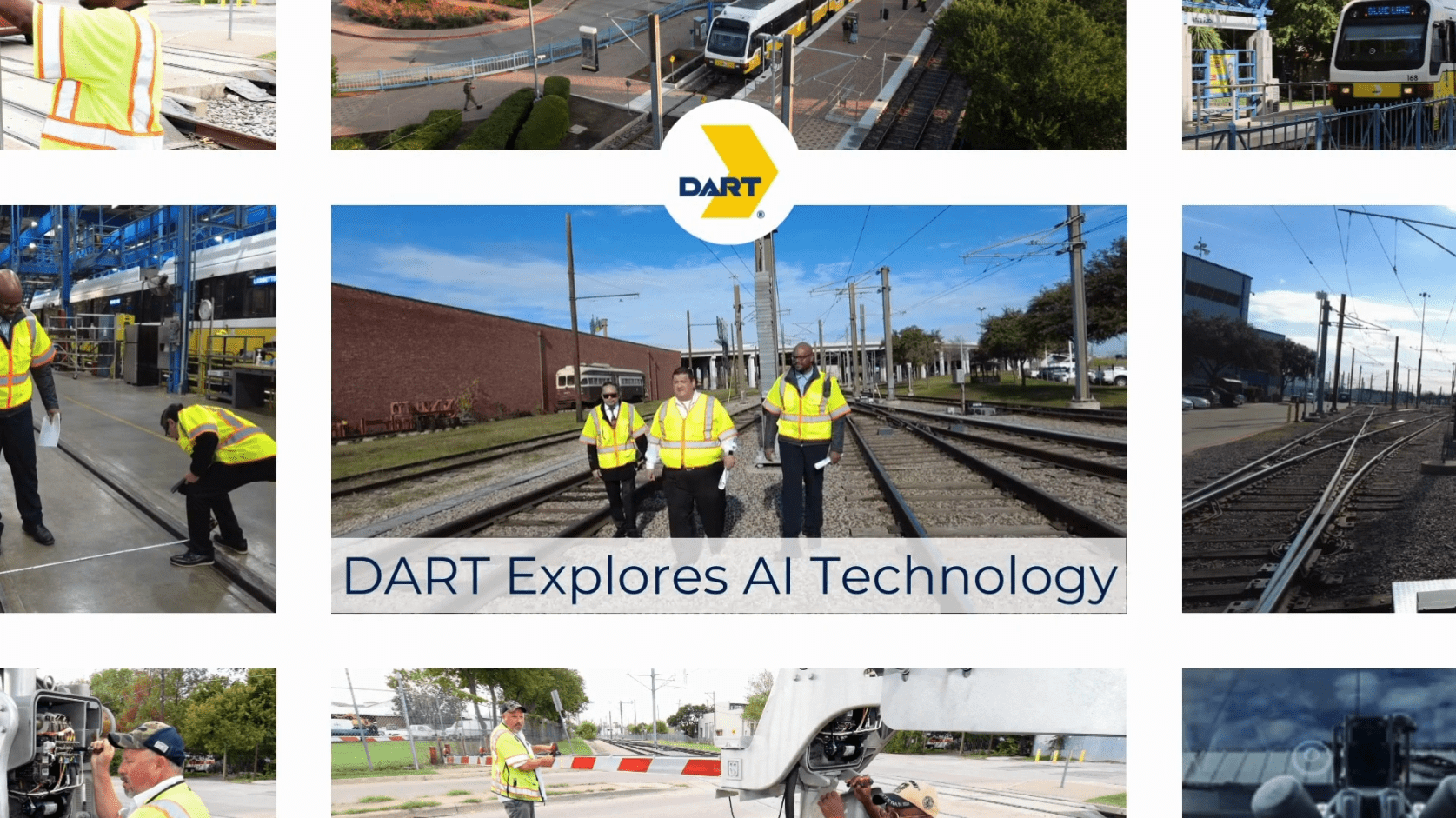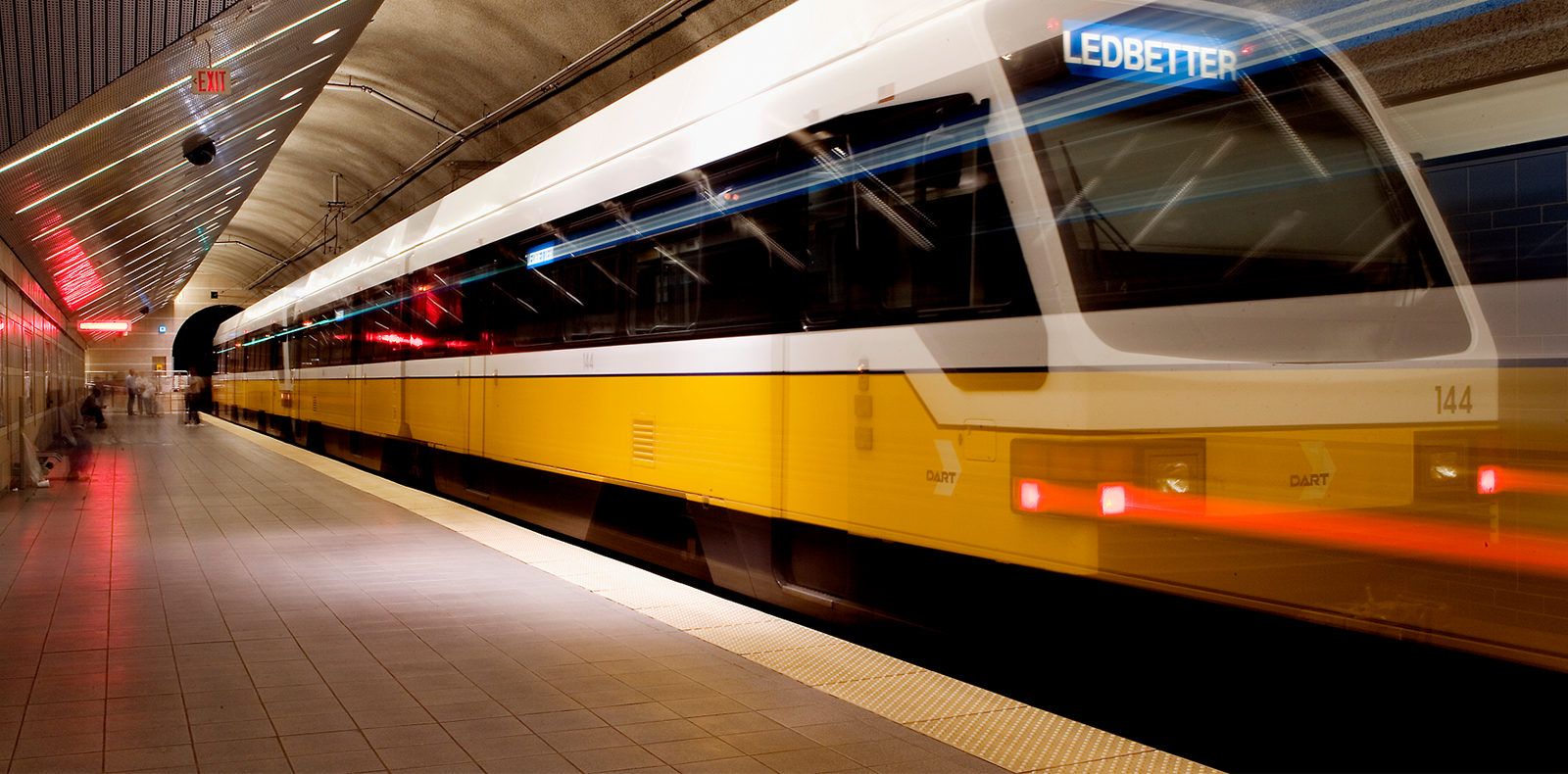- Ask DART
- About
- News
DART Explores AI Technology to Enhance Asset Management
 DART Explores AI Technology
DART Explores AI Technology
DART’s priority is to ensure riders enjoy safe and reliable service. Effectively managing and maintaining buses, trains, tracks, and other assets is essential to making that happen. The agency is currently exploring new artificial intelligence technology that supplements current human inspection practices.
With the use of light detection and ranging (LiDAR), photogrammetry, artificial intelligence (AI) technology and virtual reality (VR) developed by AerialOne - a provider of Digital Twin technology, DART would be poised to perform more accurate condition assessments of its assets.
The new AI technology would allow DART to scan
“The higher accurate inspections would provide DART with analytics to support more efficient predictive maintenance programs, pinpoint safety hazards, and identify the need for future expenditures to maintain a State of Good Repair (SGR),” said Jaime Aleman, director of Reliability Engineering. “And because of its accuracy and efficiency, it will compress time on maintenance and infrastructure inspection tasks, which results in a cost savings across engineering, construction, design, maintenance, and capital improvement budgets.”
The agency hopes to implement this new technology in FY 2025.
Trimble MX9 Mobile Imaging System
Mobile Imaging System -- Train Mounted
Data Collection Scans
Categories : DART Daily Knowledge - Community
DART Explores AI Technology to Enhance Asset Management
 DART Explores AI Technology
DART Explores AI Technology
DART’s priority is to ensure riders enjoy safe and reliable service. Effectively managing and maintaining buses, trains, tracks, and other assets is essential to making that happen. The agency is currently exploring new artificial intelligence technology that supplements current human inspection practices.
With the use of light detection and ranging (LiDAR), photogrammetry, artificial intelligence (AI) technology and virtual reality (VR) developed by AerialOne - a provider of Digital Twin technology, DART would be poised to perform more accurate condition assessments of its assets.
The new AI technology would allow DART to scan
“The higher accurate inspections would provide DART with analytics to support more efficient predictive maintenance programs, pinpoint safety hazards, and identify the need for future expenditures to maintain a State of Good Repair (SGR),” said Jaime Aleman, director of Reliability Engineering. “And because of its accuracy and efficiency, it will compress time on maintenance and infrastructure inspection tasks, which results in a cost savings across engineering, construction, design, maintenance, and capital improvement budgets.”
The agency hopes to implement this new technology in FY 2025.
Trimble MX9 Mobile Imaging System
Mobile Imaging System -- Train Mounted
Data Collection Scans
Categories : DART Daily Knowledge - Knowledge
DART Explores AI Technology to Enhance Asset Management
 DART Explores AI Technology
DART Explores AI Technology
DART’s priority is to ensure riders enjoy safe and reliable service. Effectively managing and maintaining buses, trains, tracks, and other assets is essential to making that happen. The agency is currently exploring new artificial intelligence technology that supplements current human inspection practices.
With the use of light detection and ranging (LiDAR), photogrammetry, artificial intelligence (AI) technology and virtual reality (VR) developed by AerialOne - a provider of Digital Twin technology, DART would be poised to perform more accurate condition assessments of its assets.
The new AI technology would allow DART to scan
“The higher accurate inspections would provide DART with analytics to support more efficient predictive maintenance programs, pinpoint safety hazards, and identify the need for future expenditures to maintain a State of Good Repair (SGR),” said Jaime Aleman, director of Reliability Engineering. “And because of its accuracy and efficiency, it will compress time on maintenance and infrastructure inspection tasks, which results in a cost savings across engineering, construction, design, maintenance, and capital improvement budgets.”
The agency hopes to implement this new technology in FY 2025.
Trimble MX9 Mobile Imaging System
Mobile Imaging System -- Train Mounted
Data Collection Scans
Categories : DART Daily Knowledge - Leading Mobility
- language




 Translate
Translate
Leave a comment